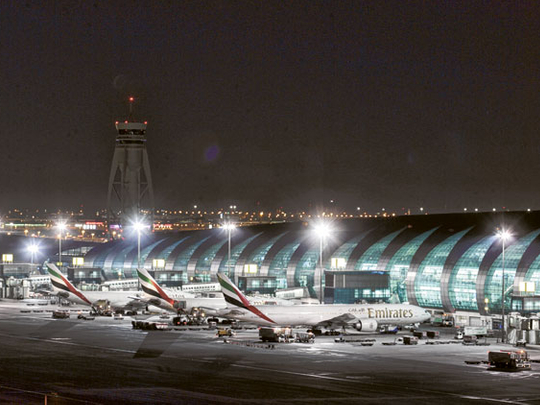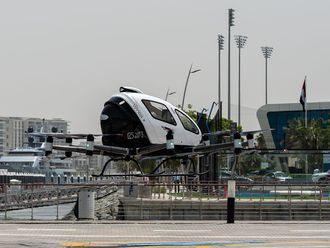
Dubai: The Dubai International Airport will become the second busiest international airport in the world by November.
According to a new study by the Centre of Asia Pacific Aviation (Capa), Dubai International — currently the world's fourth busiest international airport — will occupy the number two slot from November 2011 in terms of passenger numbers, with London Heathrow at the top, going by the aviation body's forward (winter) schedule.
Dubai airport's jump would leapfrog Frankfurt, Hong Kong and Paris Charles de Gaulle (CDG), Capa said in its report, adding that Dubai had recently overtaken Frankfurt International Airport.
The jump does not come as a surprise going by the latest passenger numbers for July released by Dubai Airports, the body that owns and manages Dubai's two airports — Dubai International and Dubai World Central-Al Maktoum International.
Dubai International handled a record 4.7 million passengers in July.
This was an increase of 400,000 over the previous month, and a 9.7 per cent increase year-on-year over the corresponding period in 2010.
According to Dubai Airports, the largest growth occurred on routes from the GCC, Indian subcontinent, Western Europe and North America.
Record traffic
Furthermore, the projected jump in November brings Dubai International closer to its goal of achieving the top slot potentially by 2015, outstripping London Heathrow as the busiest international airport in the world.
By 2020 Dubai Airports expects the airport to handle around 98 million passengers per annum.
Commenting on the Capa analysis, Lorne Riley, Head of Corporate Communications at Dubai Airports, told Gulf News that Dubai International is witnessing record traffic numbers.
"By the end of the year we project over 51 million passengers will pass through Dubai International," he said.
He added that a growing number of internationally respected organisations are "bullish" about the airport's prospects, "and for a good reason."
He added that while Capa is basing its projection on monthly data responding to seasonal fluctuations in capacity, Dubai Airports looks at the past 12 months of passenger traffic data.
"That said, it is clear both organisations agree the trend is going only one way and that is up," Riley said.
Corroborating this, the Capa analysis of seat capacity reveals that the upcoming winter 2011-12 schedule will catapult Dubai into second spot, ahead of Hong Kong International Airport and Paris CDG.
"Capa's Airport Rankings tool shows that airlines at Dubai Airport will offer more than 1.3 million seats per week in November 2011.
"Dubai will hold this advantage through December and into the New Year," the aviation body stated in its report.
It added that the capacity hike comes about as a result of the "seasonal upswing in capacity" offered by airlines based in the Gulf, besides increases in traffic connecting Europe and the Asia Pacific via Dubai.
Future growth
Analysing Dubai airport's future growth, Capa's report said: "The question is whether Dubai can maintain its grip on second spot once the northern summer schedule commences in 2012.
"Seasonal traffic in Europe soars, as European carriers re-jig their schedules, while traffic in the Gulf slows, particularly through the second quarter."
It added that if recent rates of growth continue, Dubai could maintain its position [from November 2011] as the world's second busiest international airport through 2012 and could overtake Heathrow before 2015 as the London airport has "little spare capacity for expansion", with just two runways already operating at near peak capacity.
Hong Kong's airport, meanwhile, faces runway and airspace capacity constraints, according to the report.
"Of its [Dubai airport's] larger rivals, only Paris CDG is relatively unconstrained in terms of capacity, but has been consistently outstripped in terms of growth by DIA," Capa said in the report.












